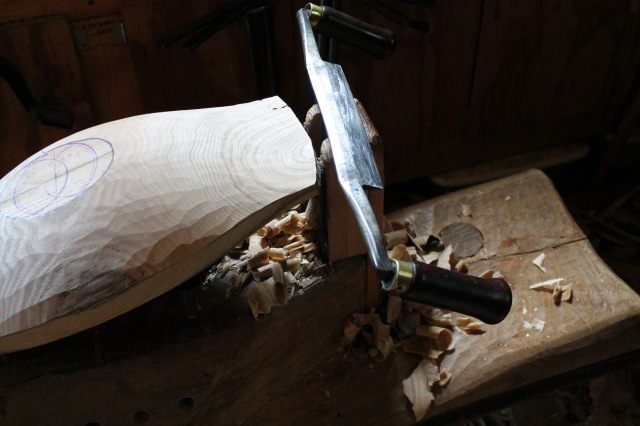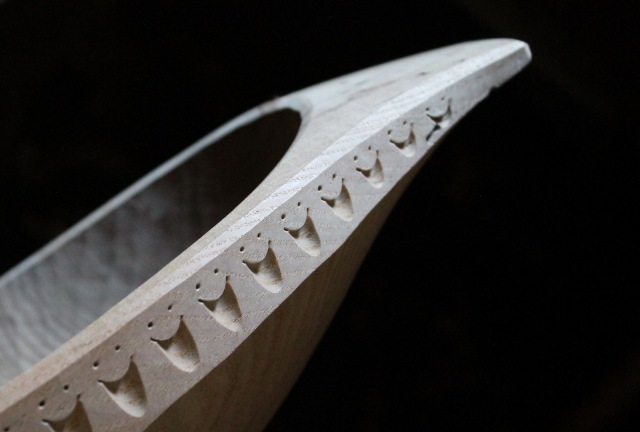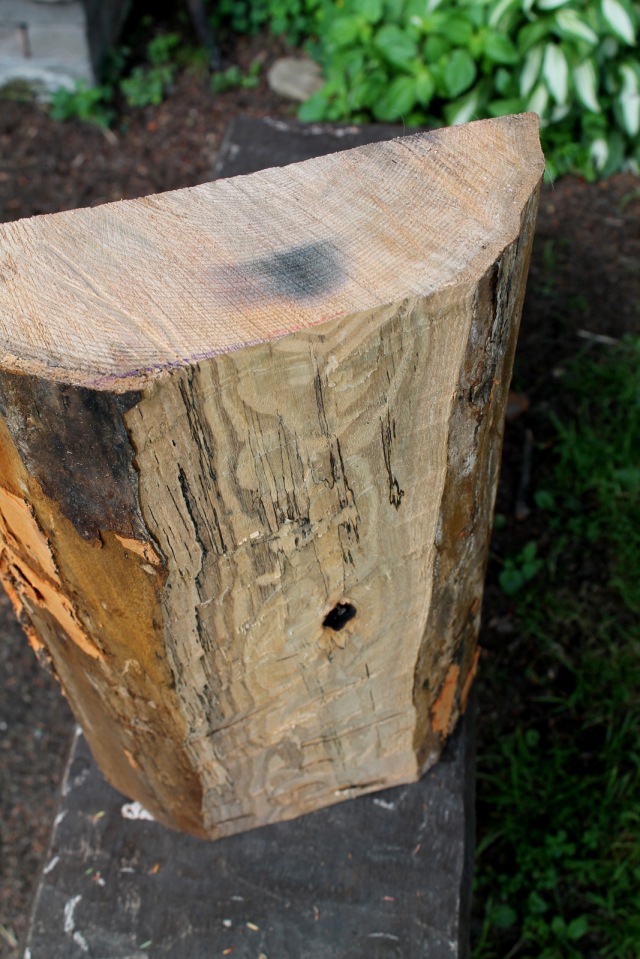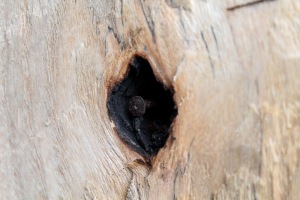
I had been thinking about an ideal bowl design for the Plymouth CRAFT class, now only a month away. This sample bowl is the result of those thoughts. In addition to providing challenges for development of various skills, I wanted the bowl to be useful, beautiful, and reasonable for students to achieve in a two day class. But, even outside of a class, I think this is an ideal design for a beginner bowl, and one that provides a foundation that can be built upon as one’s skills improve. In fact, more advanced students may wish to explore some of those options during the class.
One challenge of a two day course is the lack of drying time. Therefore, when carving this sample bowl, I carved it, start to finish, in one go — green. In fact, as you see it in the photos it is still green. I’ll get a better surface finish if I go back over some areas after it dries; then again, I could just leave it dry then put on some oil.

My sample bowl is in sassafras — twisted, bug-eaten, iron-stained, knot-holed sassafras. But it is a relatively soft hardwood that is easy to work, and I had some around. I started with a log of about twelve inches in diameter. The bowl is about 18 1/2″ long, 9 3/4″ wide, and 4″ high. Notice in the above photo that, as the sidewalls approach the corners of the handles, there is no outward return of the line. This is just one example of simple design considerations that make the bowl easier to execute; the tool can exit right off of the handle without concern for grain direction issues.

There is also no major undercutting beneath the handles. The drawknife is able to flow right around the outside of the bowl and off the end of the handle.

Elements like the arched rim add visual interest, and the side panel provides an opportunity for a variety of decorative carving. In this case, I carved a series of simple gouge nail cuts, then jabbed the points of dividers above them. Creates a simple cheery design!
So now I have the bowl wrapped in an old towel while it dries. This sassafras is funny stuff. As it dries, you can hear it snapping and crackling — very faintly, like Rice Crispies. The only wood I’ve ever noticed to do that. Scares me as I’m waiting for the “POP!” The towel serves as a partial barrier to moisture loss, slowing the drying while avoiding mold.

 But one more thing — about that odd blue streak you may have noticed in the bowl. The photo above shows another piece of the same sassafras tree. Tannin-rich species such as oak, chestnut, and sassafras will react with iron, creating a bluish streak. So, if you see something in the end grain like that in the above photo, beware! I didn’t heed the warning, and it was almost too late for my axe when I noticed this embedded nail.
But one more thing — about that odd blue streak you may have noticed in the bowl. The photo above shows another piece of the same sassafras tree. Tannin-rich species such as oak, chestnut, and sassafras will react with iron, creating a bluish streak. So, if you see something in the end grain like that in the above photo, beware! I didn’t heed the warning, and it was almost too late for my axe when I noticed this embedded nail.
 I had to reject that chunk. In the case of my bowl, I was able to split off a piece containing the nail that caused the blue streak (left) and proceed with the bowl.
I had to reject that chunk. In the case of my bowl, I was able to split off a piece containing the nail that caused the blue streak (left) and proceed with the bowl.
 So, especially when working with yard trees or roadside trees, watch out for embedded metal. If your adze hits that nail, you’ll look like this:
So, especially when working with yard trees or roadside trees, watch out for embedded metal. If your adze hits that nail, you’ll look like this:

Wormy, twisted, stained andd still awesome.
LikeLike
Beautiful! Can’t wait for the class in a few weeks.
LikeLike
I’m looking forward to it as well, Gene. Shoot me an email if you have any questions. See you there!
LikeLike
Looks ab fab. Wish I could attend a class but live in the UK. I have I nice piece of Ash or Sycamore in the size given. I only hope I can replicate what you have done.
LikeLike
Dave, this looks awesome! Can’t wait to start!
Gordon Hafner >
LikeLike
Dave, when you say “Elements like the arched rim add visual interest…” Which way are you looking at the bowl? From the side? Top (along the length)? or The end? The bowl looks great, I like the “defects” natural and human caused.
LikeLike
Good question, Phillip. What I mean is that the rim is arched when looking from the end of the bowl. Maybe the best way to describe it is by referring to this post from last year https://davidffisherblog.wordpress.com/2015/05/19/round-top/. I don’t mean to imply that bowls that are flat across the top don’t have visual interest, rather that a round top is a possibility for creating added dimension to a bowl.
LikeLike